
 |
Breathability |
A lecture prepared for the Lime Forum 'Breathability' day, 18 September 2011.
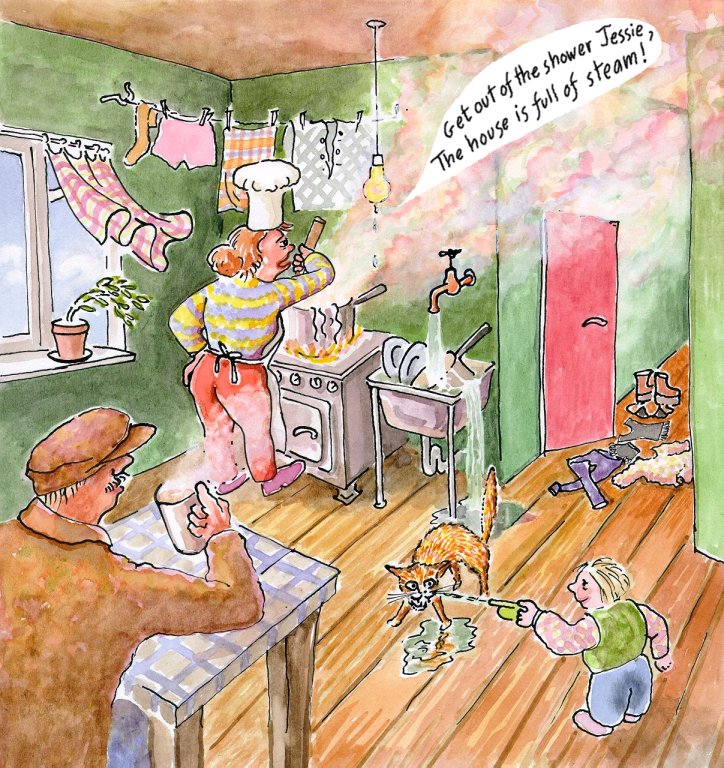
In the context of building physics, humans are best regarded as sources of water vapour and complainers of cold. The result, in a cool climate, is a much higher water vapour concentration within the house than outside it.
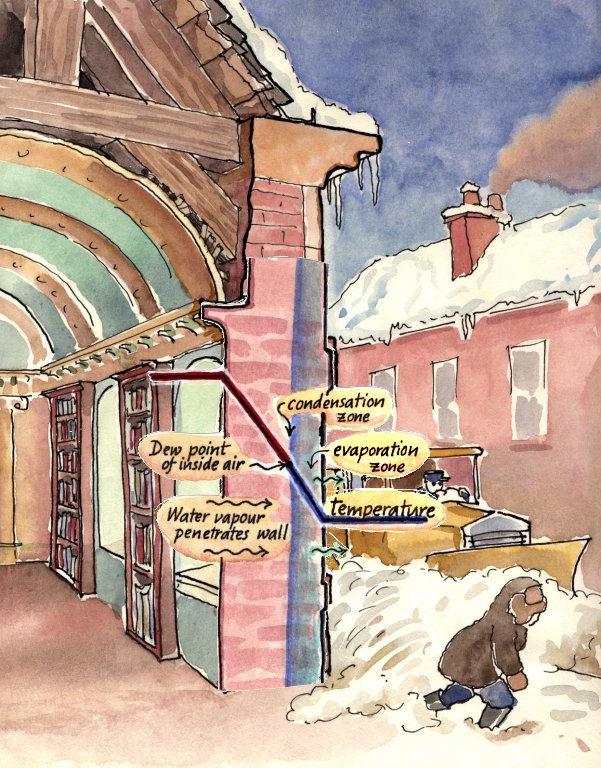
This water vapour concentration, entrained in air flow or diffusing through the materials of the outer wall, meets a temperature below its dew point. Condensation and ice lenses damage the wall, crystals grow and dissolve and biology flourishes.
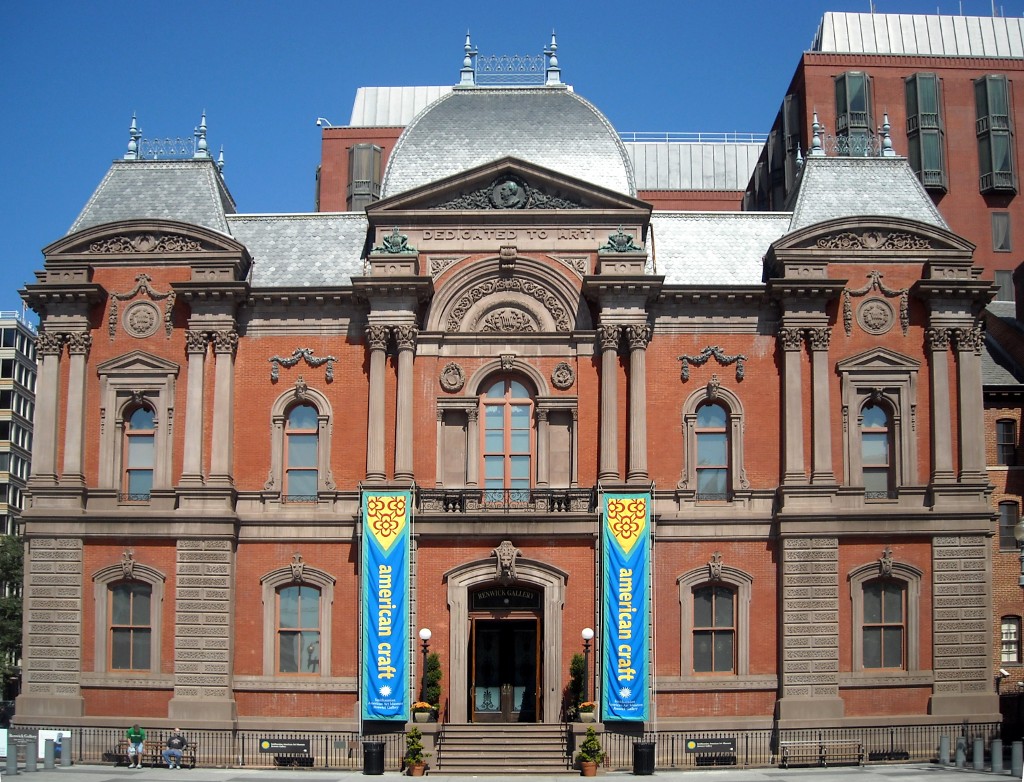
Real buildings exhale water along a more tortuous path. The Renwick gallery in Washington DC has an ornately 3D facade, which was crumbling away from salts efflorescing from the brick wall.

The chosen solution was to rebuild the ornamentation with an air gap which salts could not jump over. But the air gap had a non uniform temperature so water vapour diffusing through the solid brick wall moved sideways in the gap to build ice lenses in the coolest part. This turned out not to matter too much because of a combination of errors, such as often saves buildings from destruction. The hastily matured coloured concrete false stonework shrank and opened cracks to ventilate the air gap to the outside. The balance between moisture diffusion rate and ventilation rate to the outside is often what saves buildings from destruction.
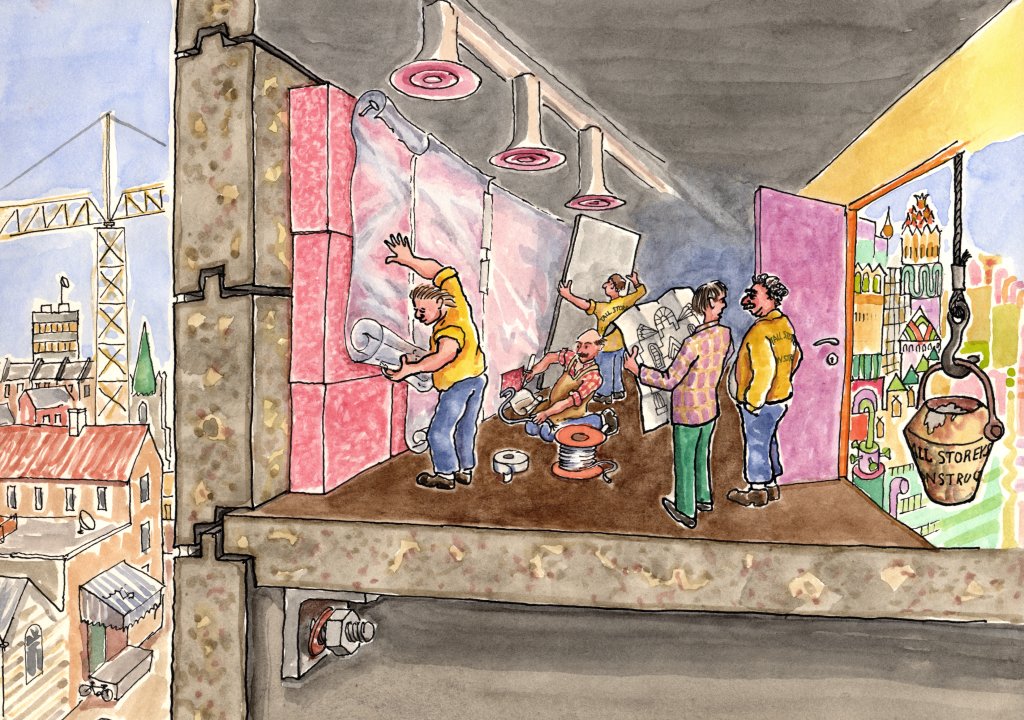
The engineers' solution to vapour escape is to provide an air barrier between inside and outside, which is inevitably breached already during construction, thus concentrating condensation and consequent damage.

The structural complexity of modern buildings is generally represented as a triumph of human ingenuity and computer aided design. The result may be short lived: 30 years in the case of the roof of the Arts and Industries museum, also in Washington DC, home to many grand designs.
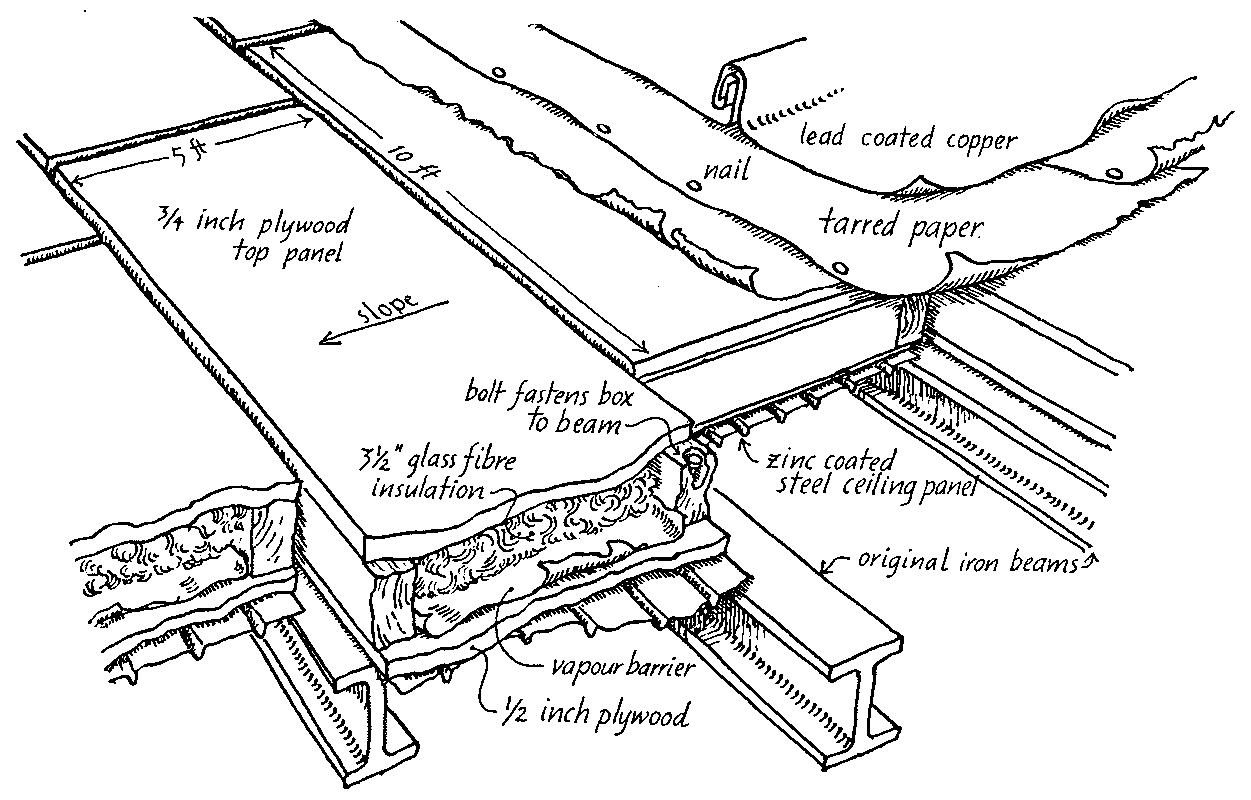
The replacement roof from 1976 was built in cassettes, assembled on the ground, hoisted into position and rapidly covered with tar paper and a final coat of lead coated copper sheet strips, clenched together at the seams.

The single, high interior space is both heated and humidified in winter. Humid air is, as I'm sure you know, lighter than dry air, and warm air is lighter still, so there is a considerable wind blowing through the roof assembly, known as the stack effect.
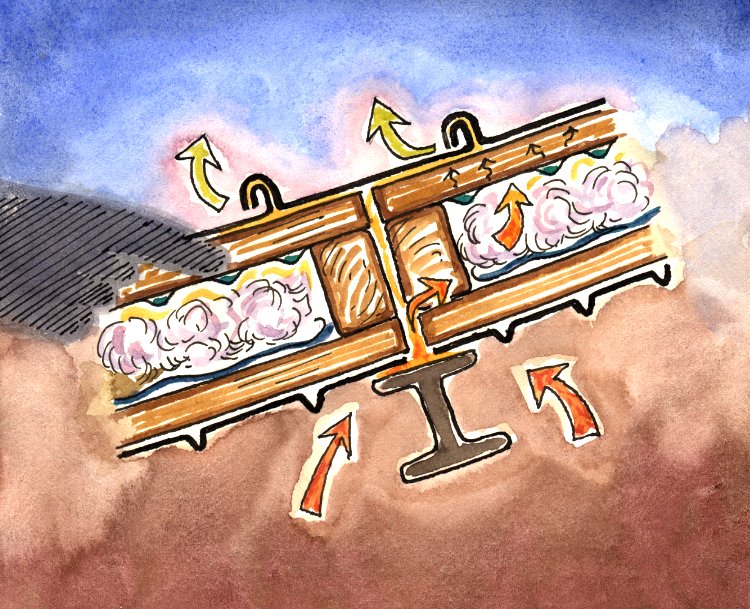
During the winter, water accumulates in the cool upper plywood layer, aided by hygroscopic salts put there to retard fire.
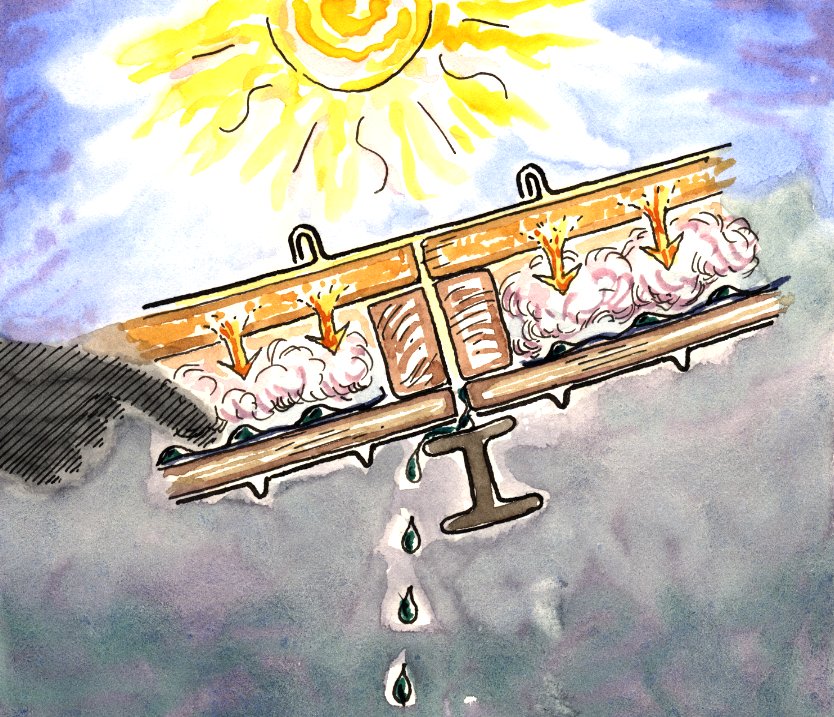
In fine spring weather the sun heats the skin to 80°C and water distills from the plywood to the cooler air barrier below the insulation. There it accumulates as drops on the hydrophobic plastic until the drops reach a critical density and water cascades into the interior of the building.
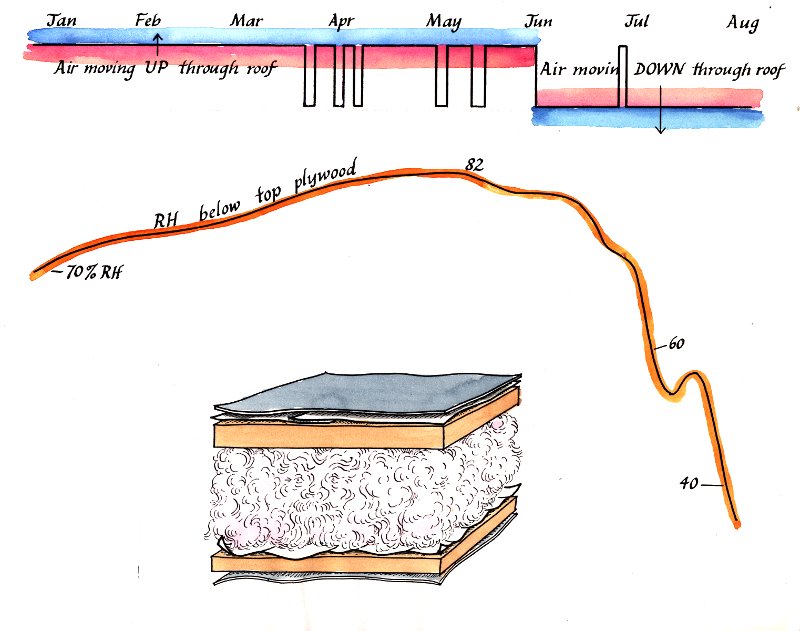
This is an example of an annual breathing cycle, driven by the stack effect forcing air flow. Capillary forces absorb water accumulating in the upper plywood. The only diffusive process is the release of water vapour from the plywood.
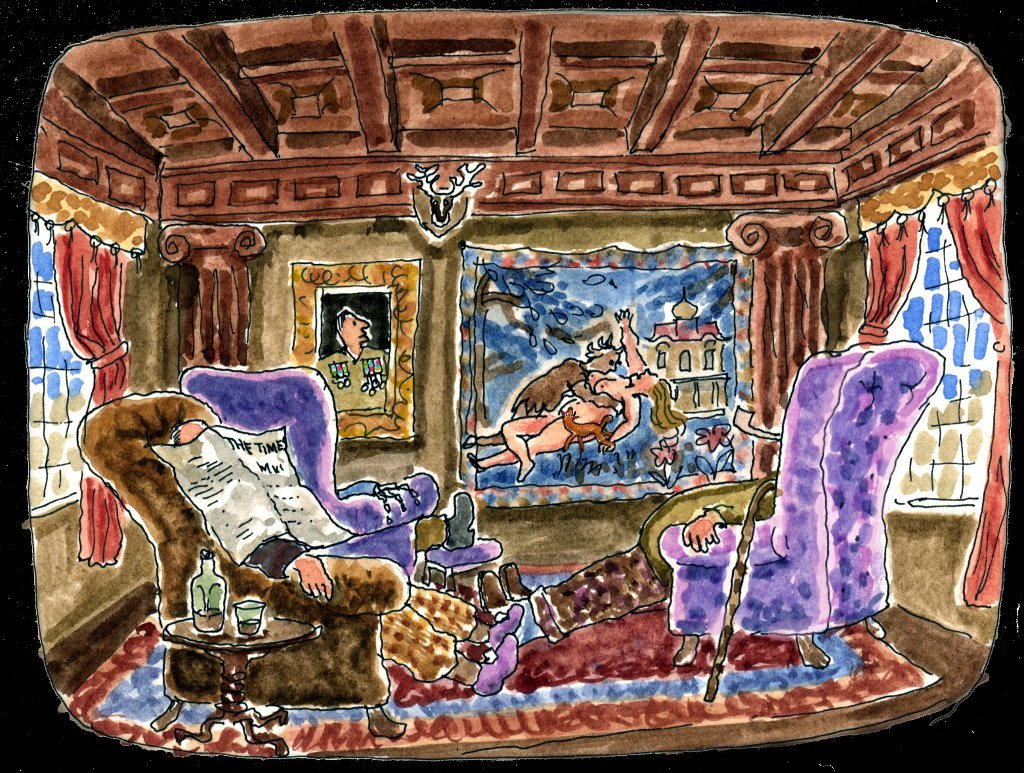
Air flow into the interior of a house is generally called ventilation. If it is slow, there is a detectable influence of diffusion processes within the walls and furniture.
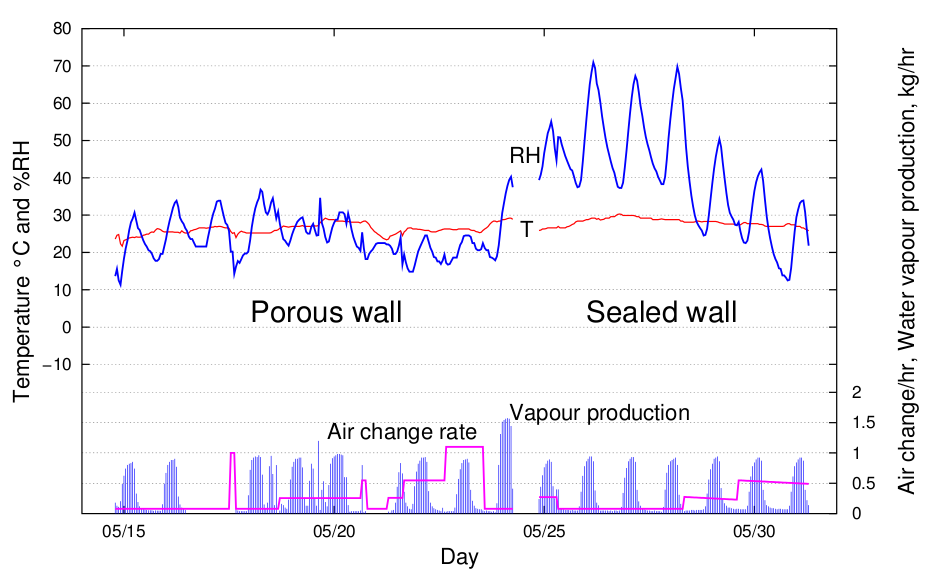
Here are two sleepers, chastely imitated by a kettle with regulated heater to fulfil the requirement of scientific stringency. The kettle's bedroom is in Tapanila eco-house in Finland. It has plasterboard walls with wood shaving insulation and wooden planks to the outside. The inside RH cycle is considerably moderated, apparently by diffusion of water vapour into the wall. The right side of the diagram shows the larger RH cycle with walls draped with polyethylene sheet.
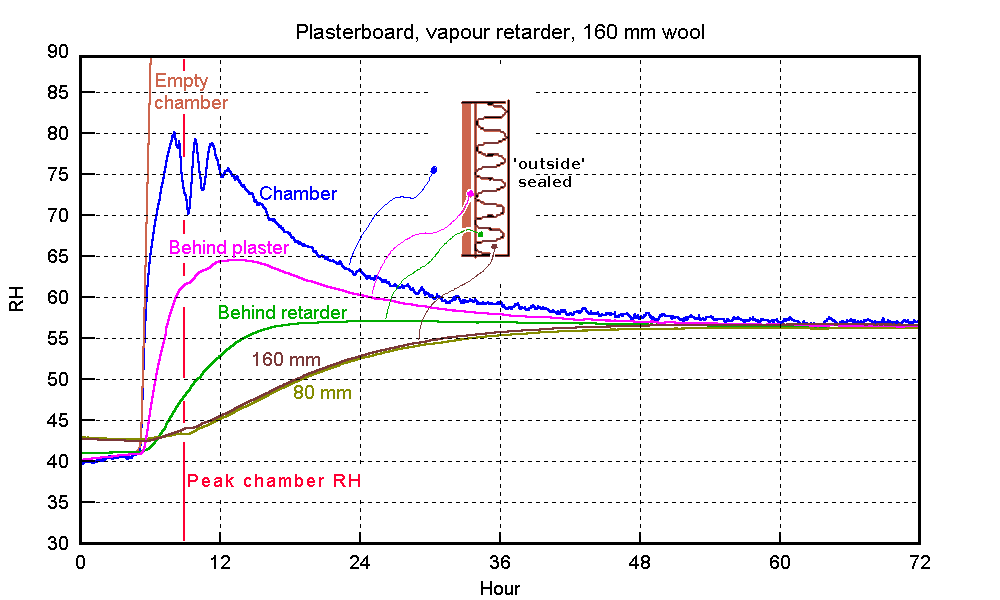
The Tapanila data are difficult to interpret, because we don't know what happens within the wall, and the outside climate does not conform to rigid scientific repeatability. Here is a pure experiment, in this case imitating an abandoned pot of boiling pasta, injecting a sudden mass of water vapour into an experimental chamber containing a similar wall to Tapanila, but with wool insulation. The outside surface is sealed, so over time the wall and the room come to a new equilibrium, sharing the added water vapour. Notice the time scale, the wool insulation takes 36 hours to come to equilibrium. During this time, the typical half an air change per hour with the outside would long before have brought the RH down. Nevertheless, the initial buffering action of the paper layers of the plasterboard has effectively prevented condensation from the burst of vapour.
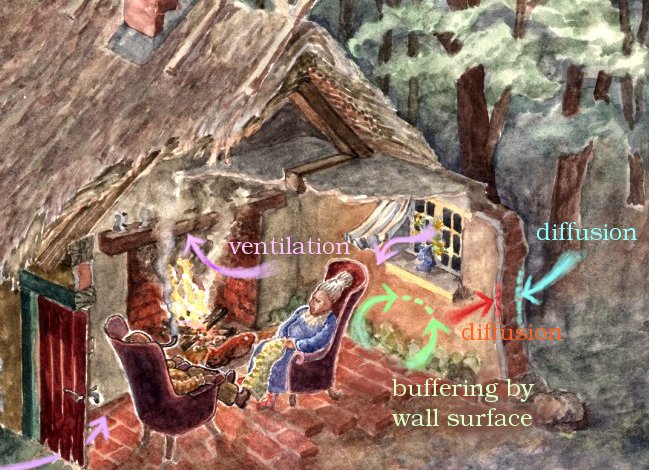
To summarise the vapour transactions in a house, one can assert that the high internal water vapour concentration will affect the outer wall by escaping through cracks, maybe with a small contribution from diffusion if the house is unusually well constructed. The reverse process of outside air movement into the house is generally called ventilation and does no damage, except to the cost of heating the house. Inward diffusion through the walls is a negligible contribution to the air exchange. Finally, the inside few millimetres of the wall can contribute significant buffering of brief surges of water vapour from human activity. We can call this 'shallow breathability'.
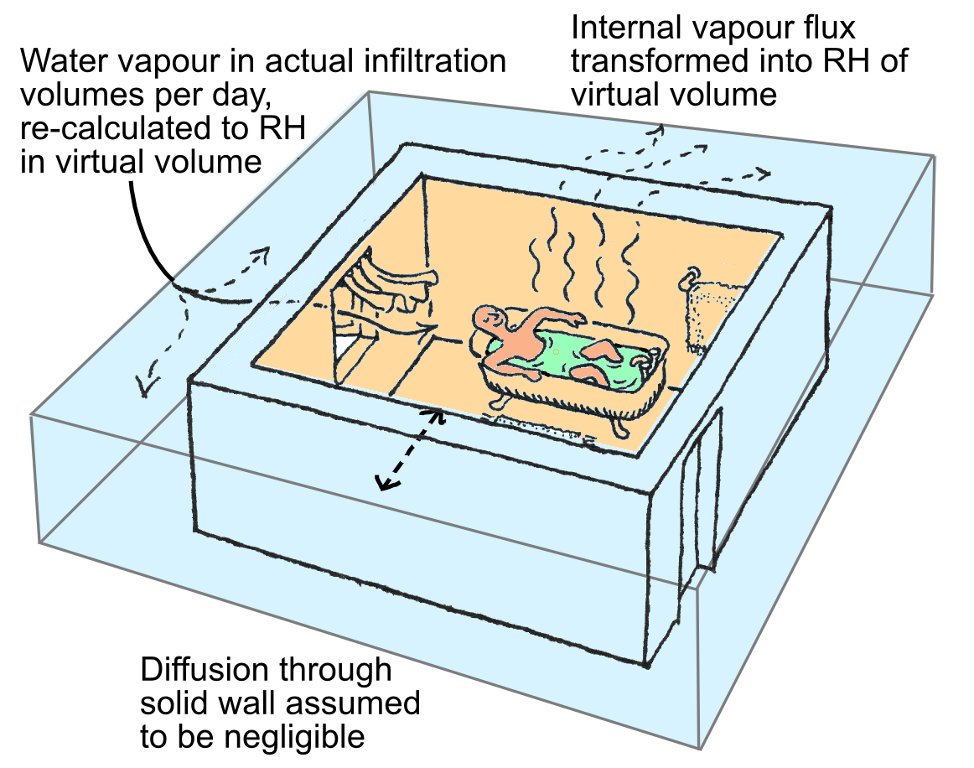
Building physicists concentrated first on energy efficiency, in the 1970s, then when airtight houses started to suffer mould growth, they tacked on a computer module to deal with diffusion, only, through the outer wall. Interest in the interior buffering is a very recent development, the programs mostly having the interior RH as a set number, rather than a dynamic consequence of physical processes. We can expect further refinement, but the addition of flow as the major cause of moisture movement is unlikely to be added, so the programs are really games for nerds trying to match the mathematical acrobatics of cosmologists. I suggest a simple way of predicting this rapid shallow breathability. A room which is buffered against RH change is equivalent to a much larger space into which moisture can diffuse with consequent small change in RH. For every square metre of active wall, or absorbent cotton covered sofa, one can connect a volume of space - an equivalent volume, which will react in the same way to suddenly injected water vapour.

Here are some values for the equivalent space. The best passive performance is by unfired perforated clay brick. It adds nearly 40 cubic metres of virtual space for every square metre of wall. But notice the devastating effect of adding a single layer of porous filter paper - the equivalent space is reduced to 10. Putting furniture against the wall reduces it still further, unless the furniture is moisture active. Nevertheless, clay walls provide significant moderation of the daily cycle of water flux from human activity.
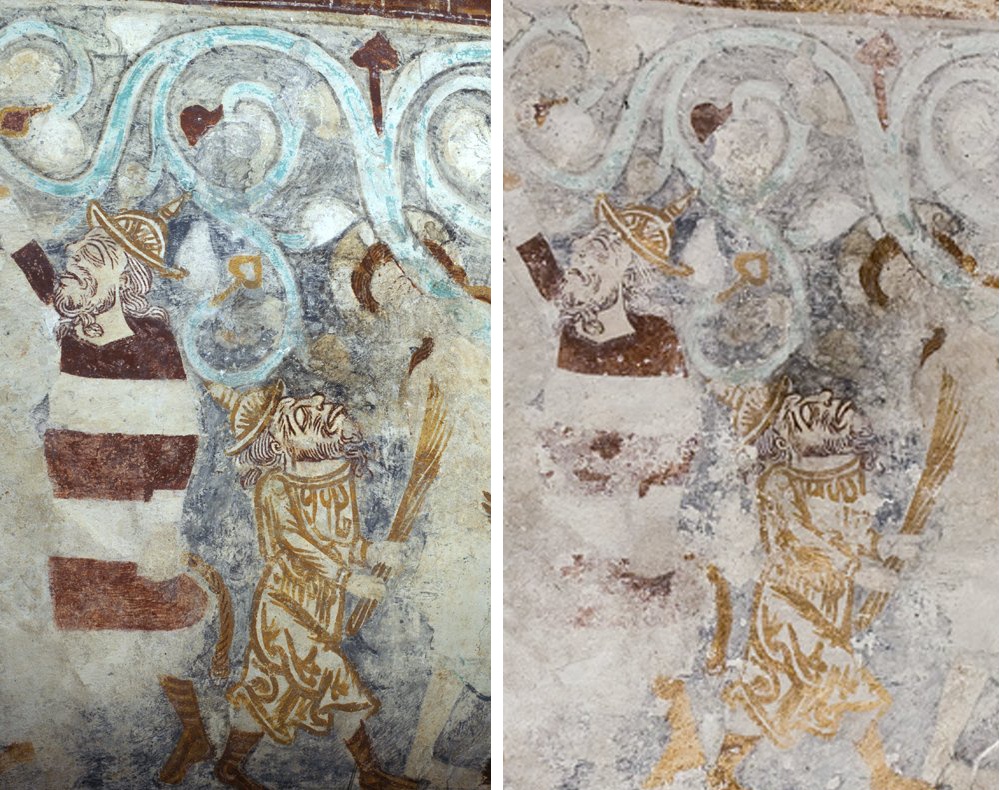
Finally, I want to emphasise that 'breathability' used as a universally good principle is as useless a way of evading understanding of the immediate situation as is 'sustainability' or 'ecological': words that lost their meaning as soon as they were adopted as buzzwords by right thinking people. Every situation has to be evaluated from a sound knowledge of physics. I end, as I began, with the treatment of a building suffering from salt efflorescence. The 13th century vigour of the wall paintings of Strøby church in Denmark has been destroyed by ten years of constant heating of the church. This has caused salt efflorescence which has pushed off the painted lime surface. Except where a conservator, twenty years ago, varnished one small head (slightly right of centre) which she regarded as so badly deteriorated that it had to be treated in a desperate, invasive way. Now it is the best preserved area of the whole vault.

This work is licensed under a Creative Commons Attribution-Noncommercial-No Derivative Works 3.0 License.